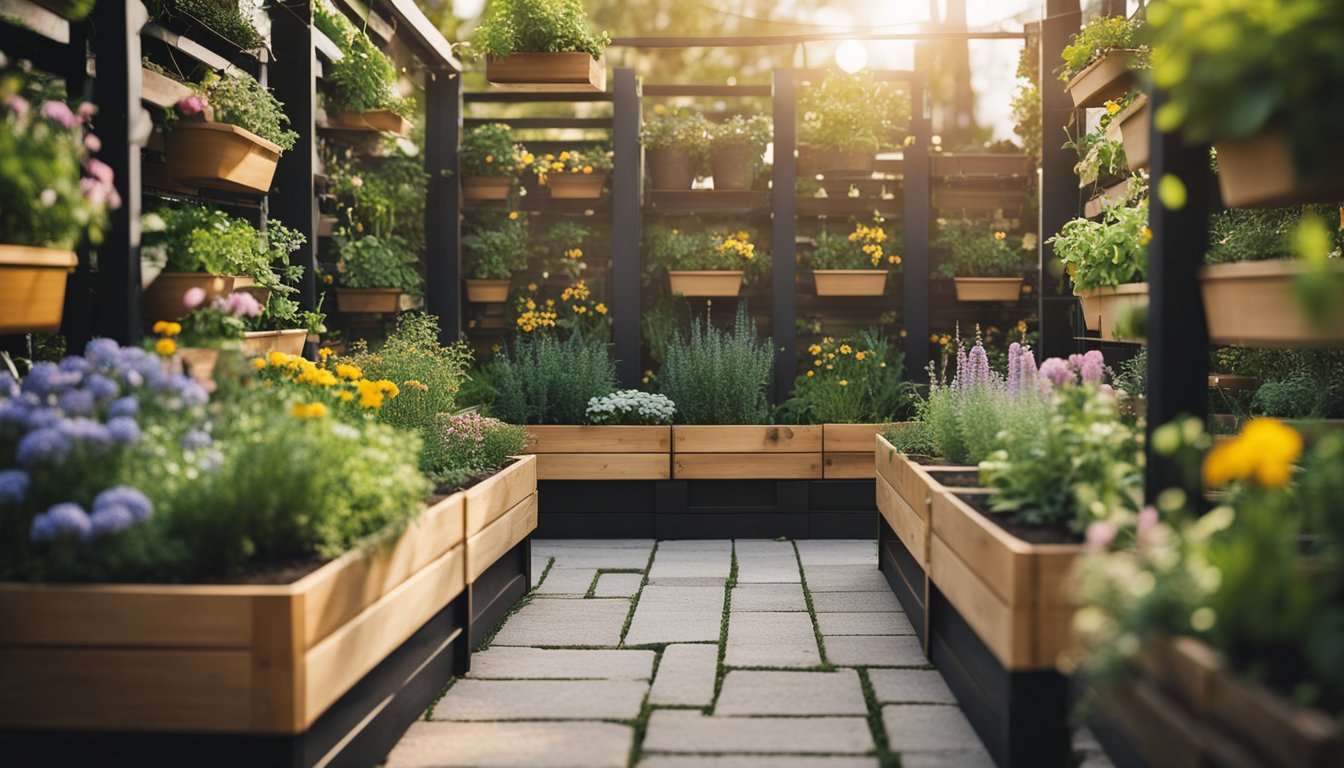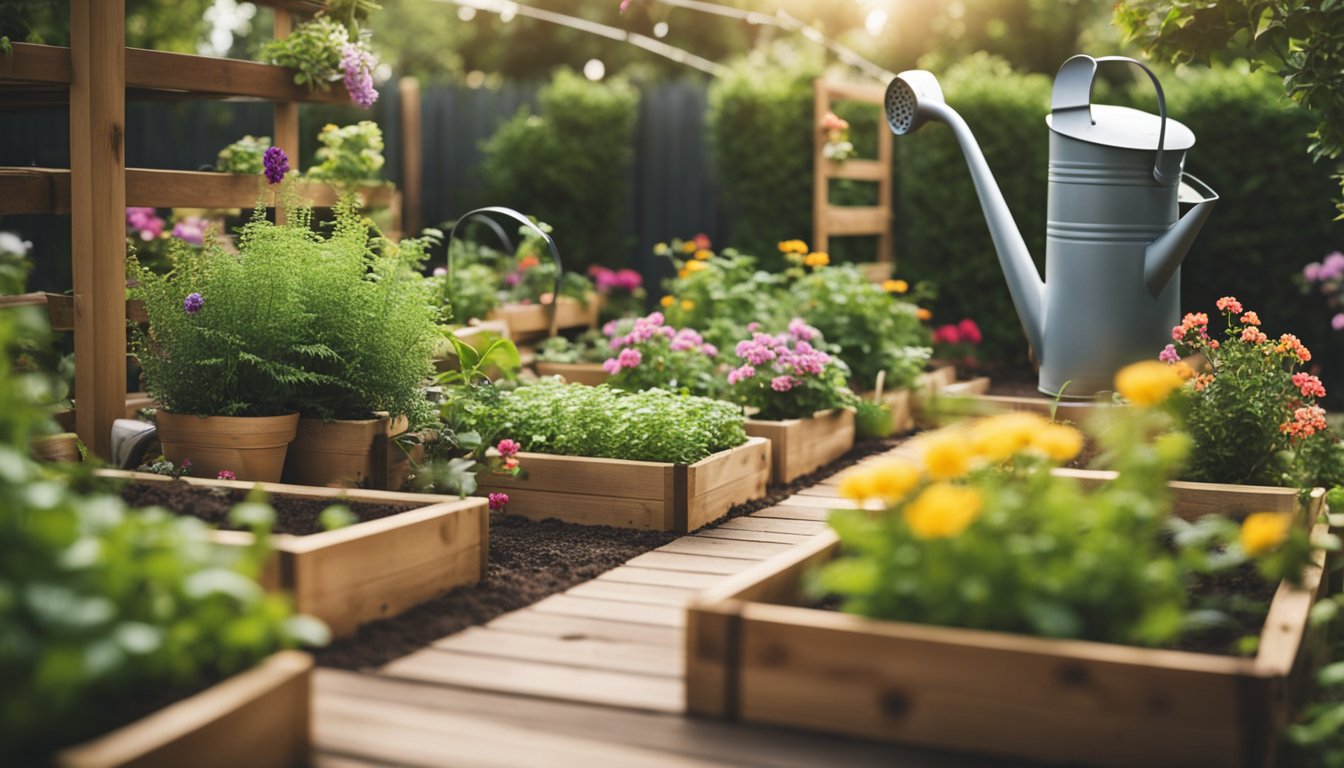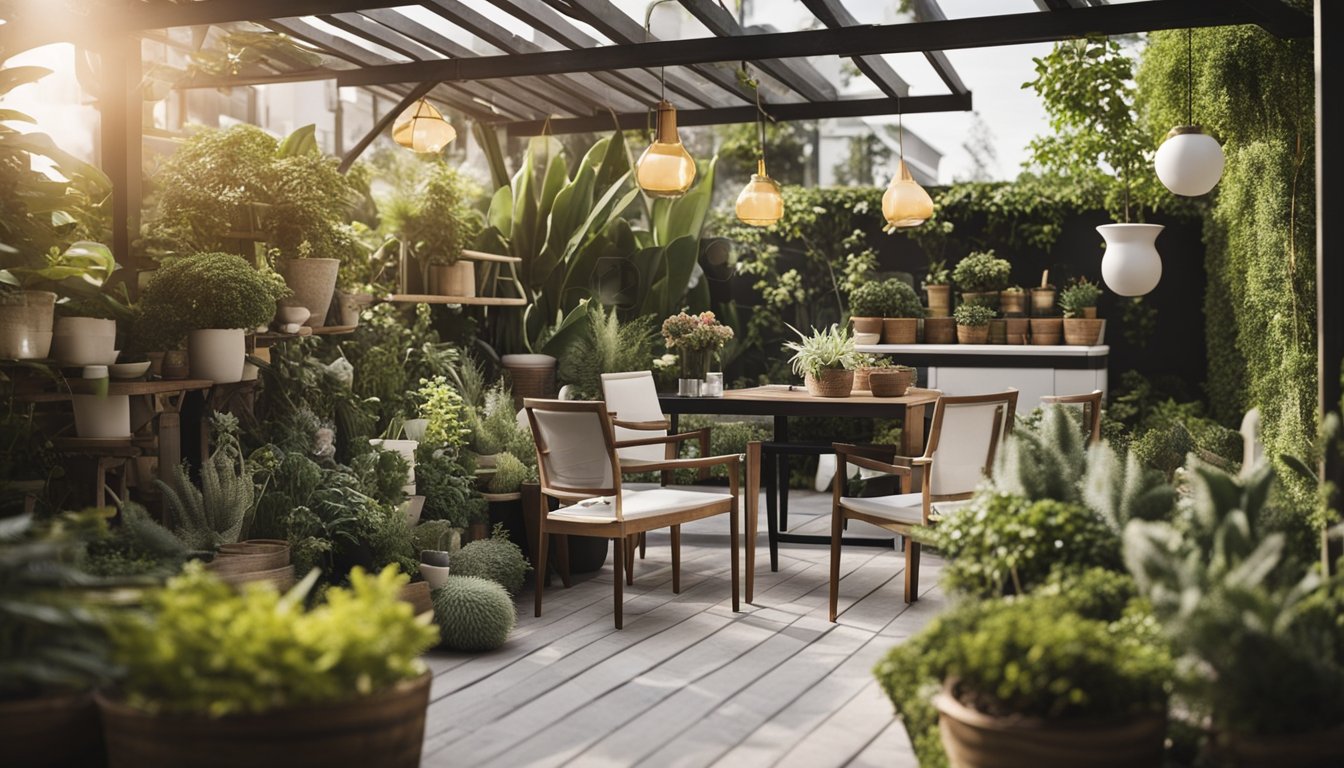Late updated: 17 Aug 2024 13:08
Written by: Daniel Harper
Maximising Small Garden Spaces: Top Tips for Efficient Use
In the world of gardening, small spaces can present unique challenges, but they also offer incredible opportunities for creativity and smart design. Whether we have a compact courtyard, a cosy balcony, or a petite backyard, the right strategies can transform these areas into lush, productive havens. Maximising small garden spaces boils down to clever planning and the right mix of plants and features.

Raised beds and vertical gardening techniques are essential tools that can enhance the potential of our tiny plots. By allowing larger plants to spill over edges or employing vertical structures, we can effectively increase the growing area and yield. Incorporating a mix of herbs, vegetables, and flowers not only makes the garden visually appealing but also maximises its utility.
Potted trees, strategic plant placement, and selective pruning are pivotal tactics. Compact, fast-growing vegetable varieties and topiary designs can add structure and depth. Ensuring our gardens are well-maintained and trimmed keeps space optimised and prevents crowding. With thoughtful design and regular upkeep, small gardens can be just as rewarding as larger ones.
Key Takeaways
- Incorporate raised beds and vertical gardening to maximise space.
- Use a mix of herbs, vegetables, and flowers for both beauty and utility.
- Proper pruning and strategic plant placement enhance garden productivity.
Designing Your Small Garden
In small gardens, effective space utilisation is essential. By focusing on vertical space, the right plant choices, and clever layout techniques, we can create gardens that feel spacious and inviting.
Utilising Vertical Space
Vertical space can transform a small garden by adding dimension and maximizing planting areas. Installing trellises allows us to grow climbing plants like ivy and roses, which not only save ground space but also add height. Vertical gardening methods such as green walls can support herbs and flowers in containers that hang vertically. This approach conserves space and enhances the garden's visual appeal. Additionally, fast-growing crops like peas and beans grow well on vertical supports. This method helps to keep our gardens looking lush and full without overcrowding.
Choosing the Right Plants
Selecting plants that are suitable for small spaces is crucial. Opting for compact plant varieties ensures that our garden doesn’t feel cluttered. Using a consistent colour palette can create harmony; green plants offer texture without overwhelming with too much colour. Companion planting can help maximise the use of limited space—pairing plants with complementary growth habits allows us to cultivate more in less area. Herbs and flowers that thrive in containers are ideal choices. Potted trees like olive trees add vertical interest without taking up much ground space.
Creating Illusions with Layout and Perspective
Designing a small garden layout strategically can create an illusion of more space. Incorporating a focal point like a water feature or sculpture helps draw the eye, giving the impression of a larger area. Playing with scale by integrating large plants among smaller ones can make our gardens feel more expansive. Using contrasting textures and complementary colours can enhance depth perception. Creating curved paths or segmented areas within the garden encourages exploration and makes our space appear more extensive. Major colour themes, like warm-hued paving, can also make our garden inviting and visually appealing.
Essentials for Small Garden Success

Maximising the potential of small garden spaces requires thoughtful planning and execution. Key strategies include the effective use of containers and planters, as well as the incorporation of furniture and accessories to create a harmonious and functional outdoor living space.
Maximising Use of Containers and Planters
In urban gardens, balconies, or courtyard gardens, containers and planters become invaluable tools. These versatile solutions allow us to bring greenery to any small area, adapting to the scale of our outdoor space.
Pots and planters enable us to grow a variety of plants, including herbs, flowers, and even small vegetables. By using a mix of sizes and heights, we can create visual interest and maximise planting potential. For example, tall planters can hold trailing plants, while smaller pots are ideal for compact and bushy species.
Raised beds offer additional growing space, especially for those with a small backyard. Their elevated structure makes maintenance and watering more manageable and provides good drainage. Adding a water feature nearby can enhance the beauty and tranquillity of our garden.
Incorporating Furniture and Accessories
Furniture and accessories play a significant role in enhancing the usability and aesthetics of small garden spaces. Selecting multi-functional furniture like benches with storage or foldable tables can help maximise space without cluttering.
Incorporate privacy screens to create intimate sections within our garden. These can serve as visual barriers, allowing us to enjoy our small garden without external interruptions. Decking can define seating areas and add depth, while lighting ensures the space remains usable during evenings.
Integrating decorative elements like a rock garden or water feature can bring a touch of nature and serenity. These features should be scaled to fit the dimensions of our garden, ensuring they complement rather than overwhelm the space. By carefully selecting and positioning furniture and accessories, we can transform even the smallest outdoor spaces into inviting and functional retreats.
Frequently Asked Questions

Gardening in small spaces requires creative and strategic approaches. We address common questions to help you design and maintain a thriving, budget-conscious small garden.
What are some budget-friendly approaches to designing a small garden?
Maximising small garden spaces on a budget involves utilising recycled materials and DIY projects. Reuse items like pallets for vertical gardens, or old containers for planting. Seed swaps and cuttings from friends can also be cost-effective ways to add variety to your garden.
How can one create a visually appealing small garden with limited space?
In small gardens, visual appeal can be achieved through strategic plant placement and creative use of structures. Mix textures and colours by combining flowers and foliage. Incorporate vertical elements like trellises and hanging pots to draw the eye upward and make the space feel larger.
What modern design principles work best for tiny garden areas?
Modern design principles focus on clean lines, minimalist features, and multifunctional elements. Use linear layouts and geometric shapes to create a sense of order. Choose multi-purpose furniture that doubles as storage, and opt for a cohesive colour palette to unify the space.
Can you suggest some DIY projects for enhancing small garden spaces?
DIY projects can significantly enhance small garden spaces. Build a vertical garden using wooden pallets or create a small water feature with a simple fountain kit. Homemade birdhouses or insect hotels can add interest and support local wildlife. Lighting solutions, like fairy lights or solar lamps, can also transform your garden at night.
What landscaping strategies are ideal for small gardens with no grass?
For gardens without grass, consider alternatives such as decking, gravel, or paving stones. Raised beds and container planting are ideal for maximising plant space. Incorporate low-maintenance ground covers or create a mosaic with stone and pebbles for added texture and interest.
How can a small square garden be optimally utilised for both beauty and function?
In a small square garden, use symmetrical designs to create a balanced look. Divide the space into distinct sections for seating, planting, and storage. Raised beds along the perimeter can provide planting space while leaving the centre open for activities. Use foldable or stackable furniture to save space.
